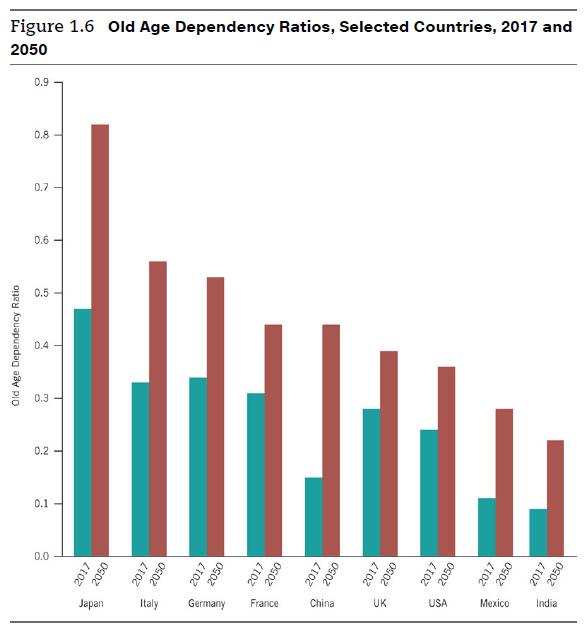Does your list of 10 products include items with components that are both domestically made and foreign
Question:
Does your list of 10 products include items with components that are both domestically made and foreign made?
Demography is the study of the structure of human populations—their size, age composition, gender mix, growth, and so on. Demographers often assert that demography is destiny. By that they mean that a country’s demography constrains and shapes the opportunities available to it. If so, then changes in the population, age structure, and gender mix of the world’s major economies suggest that significant changes are in store for the world economy.
A traditional way of examining a country’s demography is through the use of population pyramids (see Figure 1.5 , which depicts population pyramids for China, Japan, and the United States for 2017 and 2040—
roughly one generation later). In the past, the normal structure of a country’s age distribution was a pyramid. Each layer of the pyramid consisted of the number of individuals in an age bracket. The pyramid shape resulted from the fact that the number of people aged 0–4 was slightly larger than the number aged 5–9; 5- to 9-year-olds slightly outnumbered 10- to 14-year-olds; and so forth. The declining size was the result of the cruel reality of death from disease, famine, and childbirth in a world without modern medicine. Fortunately, better health care, education, and hygiene have freed many societies from this cruel reality, and some population pyramids more closely resemble diamonds or rectangles. But these societies now face the challenge of dealing with graying populations. (The U.S. Census Bureau presents population data for many of the world’s countries: go to www.census.gov; then use the search box to locate the international data base.)



These dramatic demographic changes portend major shifts in economic power and competitiveness. The populations of many major economic powers—including Russia, Italy, Germany, South Korea, and Japan—are predicted to get older and smaller over the next two decades. According to the Organisation for Economic Cooperation and Development (OECD), the old-age dependency ratio will rise dramatically over the next several decades (Figure 1.6). The old-age dependency ratio is the ratio of the number of people 65 and older to the number of people between the ages of 15 and 64. A rising old-age dependency ratio indicates that the burden imposed on current workers to support retirees will increase. This burden can take the form of familial transfers or increased taxes. In either case, the monies available to support the consumption of current workers will decline.

Case Questions 1.). What challenges do graying populations create for companies?
2.). What opportunities do graying populations create for firms?
3.). How will demographic changes affect the competitiveness of countries in the international marketplace?
4.). What can countries do to counteract the impact of these demographic changes on their economic competitiveness?
5.). What has been the impact of the one-child policy on China’s economic fortunes?
6.). Go to the U.S. Census Bureau’s international data base at www.census.gov. Pick two countries and analyze their changing demographics. Which one faces the more favorable demographic future?
Step by Step Answer:






